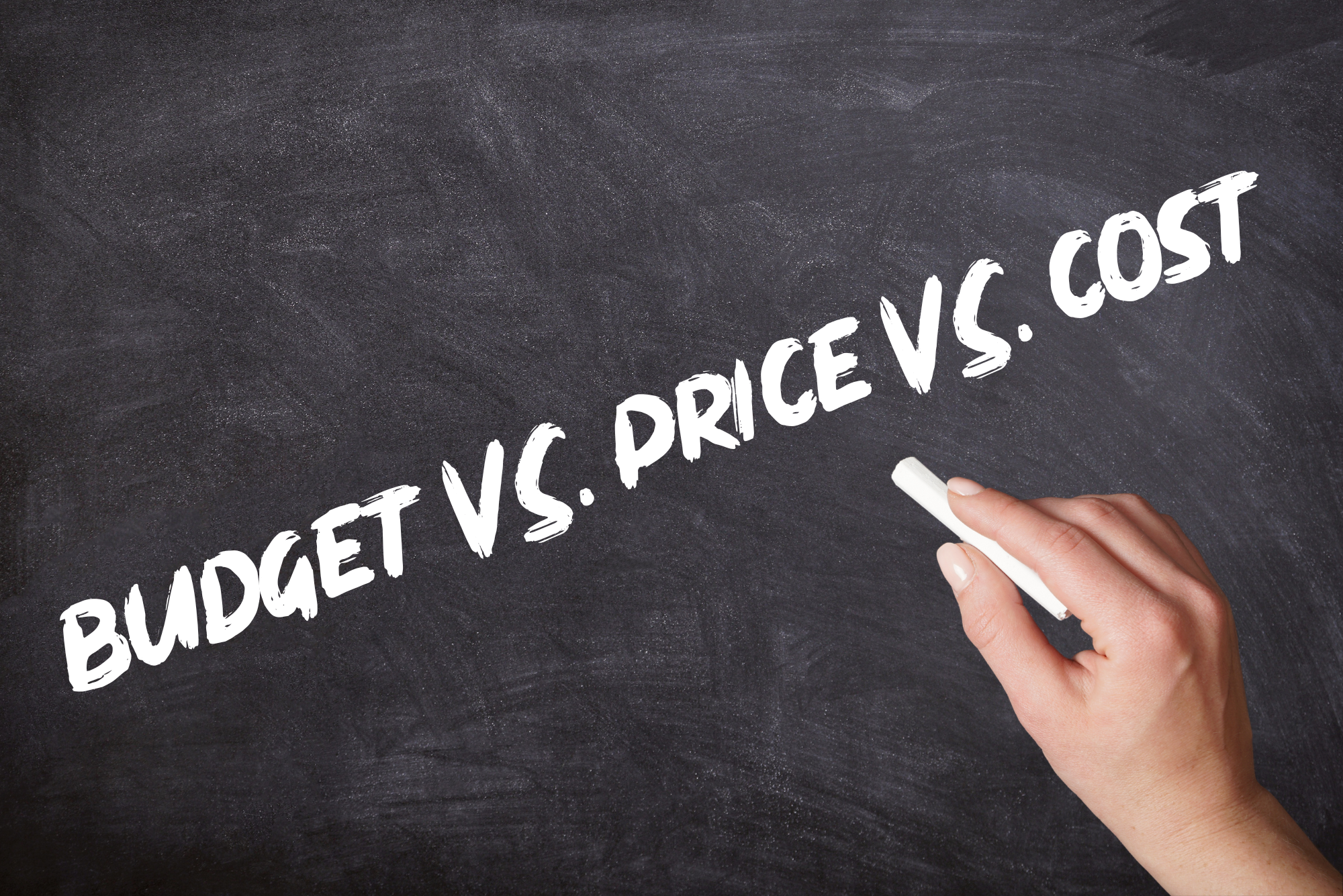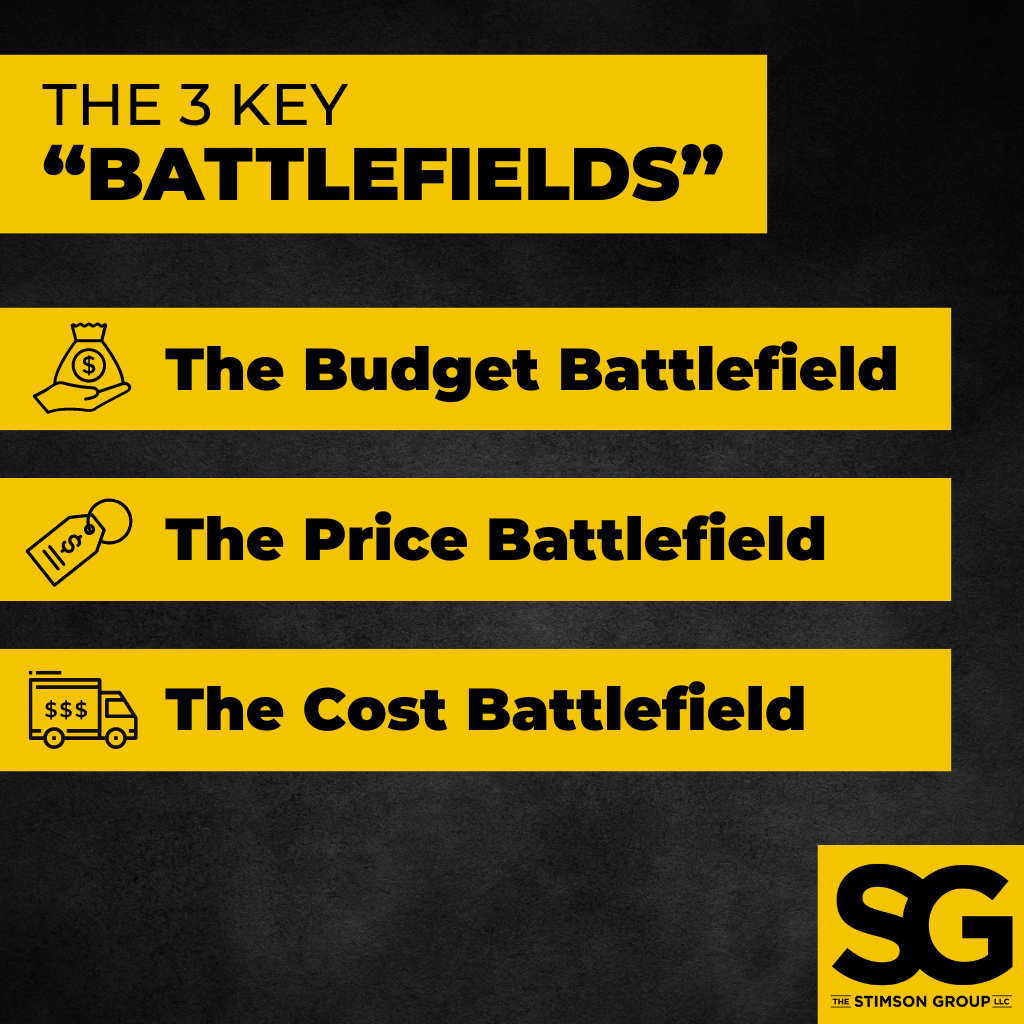
Listen instead on your Monday Morning Drive:
Selling to clients has always been a battle fought on three fields: budget, price, and cost.
You’re probably familiar with the following scenario: Your sales team puts together a beautiful proposal for a prospective client. But when the client reviews it, faces drop. Suddenly, they’re concerned about how much things cost, they’re picking out individual prices, and they’re changing their mind on scope. It feels like all your work was a waste.
This puts you, the seller, in an awkward spot. The impulse may be to push back on prices. However, if you’re in this position, you’re not actually having a price conversation — you’re having a budget conversation.
This scenario traces back to a sales process that was never clear on the customer’s budget up front. Times have changed, and today’s buyers need a different approach.
Shifting Priorities in the New Normal
2023 marked a return to “normal” market dynamics, following the frenzied buying spree of 2022. 2024 is shaping up to continue the pattern.
However, today’s customers aren’t the same ones you dealt with a few years ago. New, younger buyers who aren’t familiar with what you do are entering the market.
It would be a mistake to negotiate with this new generation of buyers the way you negotiated with pre-pandemic buyers. You risk teaching them to fixate on price rather than discussing priorities and mutual value.
Let’s leverage this inflection point so we can have more constructive conversations. First, we need to clearly distinguish budget, price, and cost so we can fight the right battle at the right time.

Defining the Key Battlefields
The Budget Battlefield
The only budget that matters is the client’s. You, the seller, don’t have a budget. You simply have a “wish list” of offerings at given prices. The power lies wholly with the buyer and how they allocate their budget.
Buyer budgets are flexible, not fixed. Their budgets are a choice, but they’re also a priority, and priorities change. Your role is to detect opportunities to shift those priorities toward your services.
Here’s another all-too-common scenario: You diligently meet a prospect’s stated budget, only for them to buy from a competitor instead. Why? Because the competitor convinced the customer to shift their priorities.
The Price Battlefield
This is where negotiations have historically focused. On the price battlefield, you pit your price against what a client says they’re willing to pay.
The trouble is that what the client is willing to pay is directly tied to their budget, whereas you price based on your costs and your perception of your value. See the mismatch? Price is a metaphorical tool that identifies what you, the seller, want the customer to think is valuable.
No wonder this battleground sees so much action!
The Cost Battlefield
The customer doesn’t care about your cost. They have a cost, which is their budget. How you configure your operations is your business.
Profit margin varies from company to company based on the actual value delivered. Your cost is essential for you to understand, but it rarely sways clients.
Where to Focus the Fight
When you’re gearing up for a sales battle, meet the client on the budget battlefield first. Helping them clarify and align their budget with their priorities makes room for you to showcase your value. Price and cost fade when you facilitate conversations about setting priorities and allocating resources.
The entry point here is confirming baseline needs — the bare minimum requirements central to their goals. If the client wants to host an event, then lighting, audio, video, and staffing are non-negotiable. Everything else is an enhancement, which can be sorted into “need-to-haves” and “nice-to-haves” depending on the type of event they want to host.
Educating clients about baseline costs lets them weigh their priorities. Now, you can discuss your client’s budget effectively.

Final Thoughts
I used to spin my wheels defending prices while prospects silently weighed priorities they never told me about. No more. Now, I open with baseline costs to help clients frame their budgets around their priorities.
Clients have the best experience navigating priorities this way, too. The conversation goes from awkward to enlightening and sets both parties up for success.





Leave a Reply